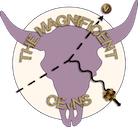Speaker
Description
This two-session course will provide an in-depth exploration of Skipper-CCD detector performance and the techniques used to analyze their data. We will begin by reviewing the concept of noise in CCD detectors and how the Skipper architecture enables significant improvements in readout noise. Participants will learn how to quantify this noise using real images. We will then survey the various sources of single-electron events, and use real data to determine the dark current of the sensors and other contributions to the single-event background. The course will include a detailed study of sensor defects, such as hot pixels and hot columns, as well as the challenges posed by Charge Transfer Inefficiency and partial charge collection. Students will learn how to identify these effects and account for them in data analysis. A key focus will be the relationship between the event size and its depth within the sensor, and how this correlation can be exploited to define quality cuts. Finally, participants will gain hands-on experience in reconstructing energy spectra from real images, enabling them to set limits on the maximum number of events compatible with the targeted physical signals.
